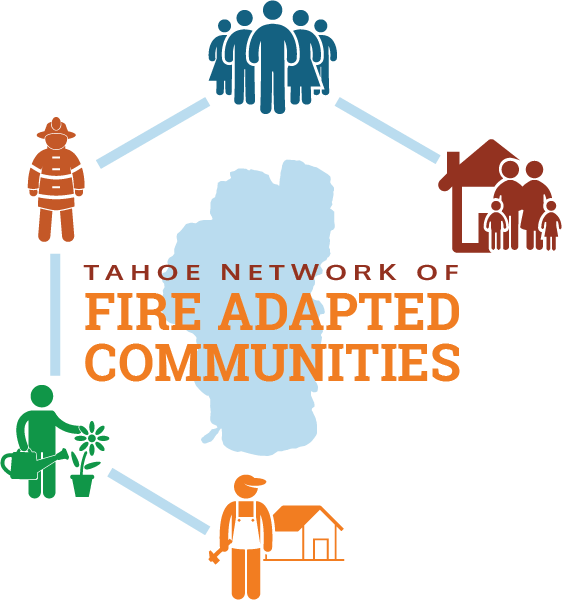
Welcome to the Tahoe Network of Fire Adapted Communities!
The Tahoe Network of Fire Adapted Communities (Tahoe Network) is a program designed to help residents and visitors prepare for wildfire. This multi-agency and community collaboration helps residents take individual action to help collectively reduce their neighborhood’s risk from wildfire. Led by the Tahoe Resource Conservation District in collaboration with local fire districts, Tahoe Network members have the opportunity to work together with neighbors to prepare for wildfire.
Contact the Fire Adapted Communities Coordinator to learn more about becoming a neighborhood leader.
Sign up to receive the Tahoe Network monthly e-newsletter and join the Tahoe Network today!
Visit the Neighborhood Leader Library.
Attend a Tahoe Fire Adapted Communities Event! See the calendar below.
Tahoe Fire Adapted Communities
In wildfire-prone areas, fire adapted communities reduce the potential for loss of human life and injury, minimize damage to homes and infrastructure, and reduce firefighting costs by taking the necessary steps to prepare properties and people before a wildfire occurs.
Well-designed fuelbreaks and safe areas protect the community
What can I do?
Work with public land agency urban lot management programs to create defensible space on neighboring public lands.
Good access helps emergency responders arrive in a timely manner
What can I do?
Home address should be made of noncombustible material with characters at least 6 inches high in contrasting colors.
Prepared communities can evacuate safely and effectively
What can I do?
Sign up for emergency notifications, make a go-bag, and practice preparing your home, family, guests, and pets for evacuation.
Proper management of vegetation surrounding the home reduces the wildfire threat
What can I do?
Contact your local fire district for a free defensible space evaluation and ask about free chipping services.
Appropriate home construction and maintenance resists ignition
What can I do?
Use fire-resistant or non-combustible roofing, siding, decking, and fencing materials.
Tahoe Network of Fire Adapted Communities Interactive Map
Use the map below to find neighborhoods preparing for wildfire. Use the map below to find neighborhoods preparing for wildfire. If you would like to join your Fire Adapted Community, contact fire@tahoercd.org, to get in touch with an active Neighborhood Leader in your area!
